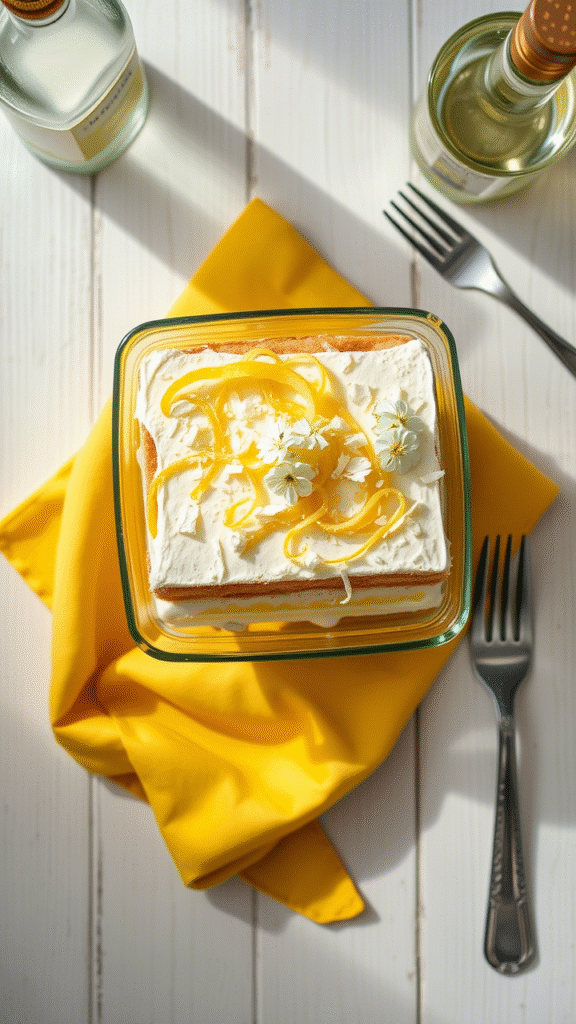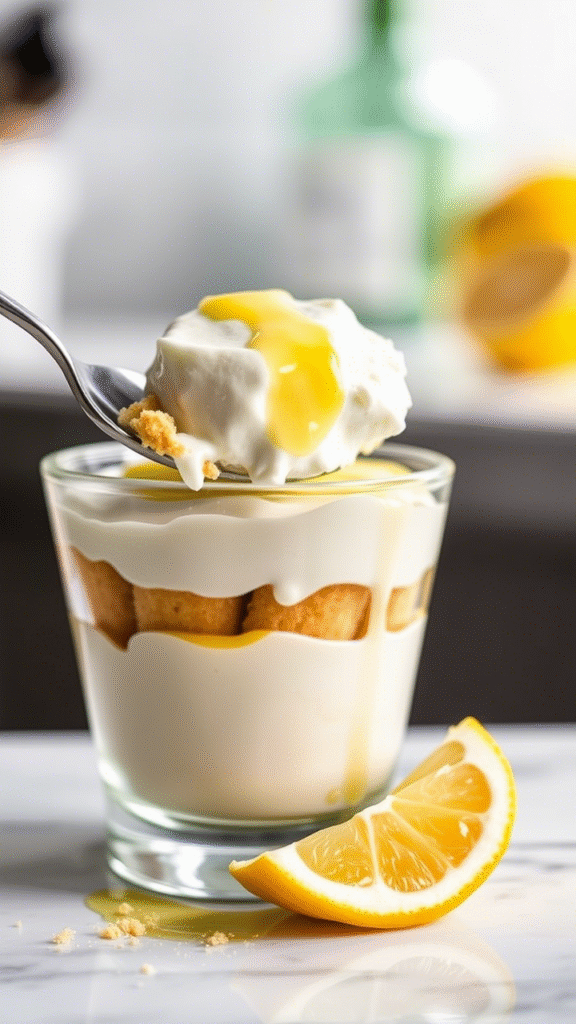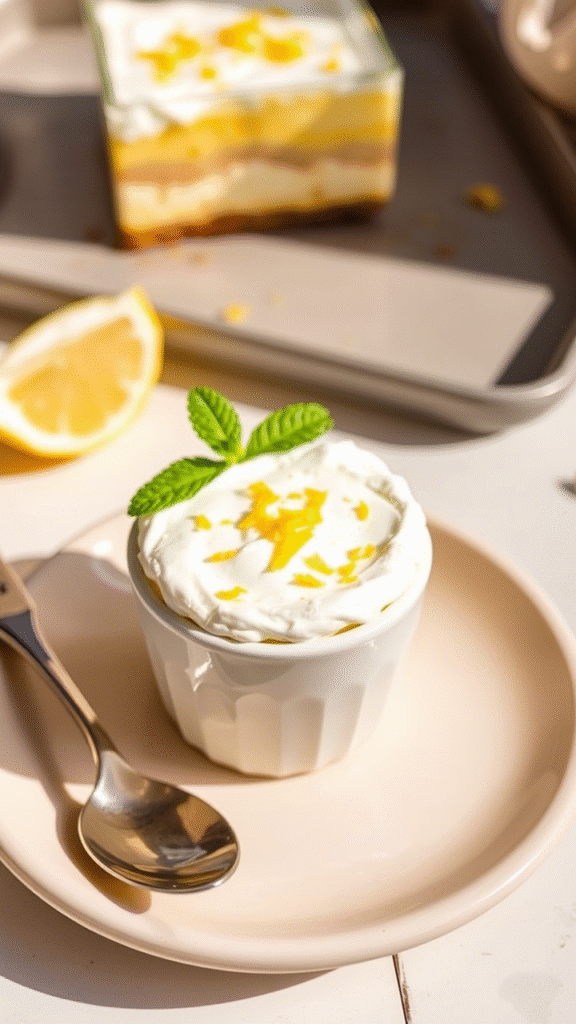I still remember the first time I tasted limoncello—on a warm, dusty afternoon in a tiny village outside Sorrento, Italy. It was served in a chilled glass the size of a thimble. That sip? Like liquid sunshine, with a slap of citrus and a sly grin of alcohol. Fast forward to now, and every time I work limoncello into a dessert, I’m chasing that memory—bright, tart, slightly wild. This Limoncello Tiramisu is a tribute to that day. But it’s also a wake-up call for anyone who thinks tiramisu can’t be anything other than coffee-soaked.
This isn’t your nonna’s tiramisu. It’s not supposed to be. We’re swapping out espresso for lemon syrup and dusting off that heavy cocoa powder for something lighter, more flirtatious. Mascarpone still carries the heart of the dessert, but it’s flirting with lemon zest now, not coffee. It’s boozy. It’s creamy. It’s sharp in all the right places. And it knows how to make an entrance.
Tiramisu means “pick me up.” With limoncello, it doesn’t just pick you up—it slaps you across the cheeks, hands you a spritz, and tells you life is short.
Let’s dive into it.
Ingredients & Substitutions
Here’s what you’ll need. Don’t skimp on quality—this isn’t the time for cheap shortcuts.
For the lemon syrup (soak):
- ¾ cup water
- ½ cup sugar
- Zest of 1 large lemon
- ½ cup limoncello (homemade or a good-quality store-bought)
For the mascarpone cream:
- 4 large egg yolks
- ½ cup granulated sugar
- 1 lb (450g) mascarpone cheese, cold
- 1 cup heavy cream, cold
- 1 tsp vanilla extract
- Zest of 1 lemon
- 2 tbsp limoncello (yes, again—trust the process)
Assembly:
- About 24 ladyfingers (savoiardi, crisp not soft)
- White chocolate shavings or finely grated lemon zest (for garnish)
- Optional: thin lemon slices or candied peel
Substitutions & Notes
If you can’t find mascarpone, a good mix of full-fat cream cheese + heavy cream (70/30 ratio) can do in a pinch. But let’s be honest—it won’t have that same Italian silkiness.
No limoncello? You could use lemon syrup plus vodka, but why would you? Limoncello is the soul of the thing.
Ladyfingers—don’t use soft sponge fingers. They’ll disintegrate like wet tissue. Get the crunchy Italian ones, ideally imported.
For dietary needs, swap heavy cream for coconut cream (chilled, only the solid part) and use a mascarpone-style vegan cheese. Skip the egg yolks and use whipped aquafaba if needed—though the flavor will drift far from the original.
Step-by-Step Instructions

This dessert doesn’t bake. But it needs patience. It needs fridge time. It rewards the kind of person who reads all the way to the end.
1. Make the Lemon Syrup
In a small saucepan, combine water, sugar, and lemon zest. Bring to a simmer until the sugar’s dissolved.
Remove from heat. Stir in limoncello. Let it cool. That’s it. Don’t rush the cooling, or you’ll melt the ladyfingers and curse yourself later.
2. Prepare the Mascarpone Cream
In a heatproof bowl (preferably glass), whisk egg yolks and sugar together. Set over a pot of simmering water—make sure the bowl doesn’t touch the water.
Whisk like your dessert depends on it—because it does. After about 7–8 minutes, it’ll thicken into a pale, glossy ribbon. Take it off the heat. Cool slightly.
Fold in the mascarpone, a little at a time. Add the lemon zest, vanilla, and limoncello. Mix just until combined. Don’t overmix—mascarpone hates that.
In another bowl, whip cold heavy cream to soft peaks. Gently fold into the mascarpone mixture. The result should be cloud-like. Not too stiff. Not too loose. If it looks like lemon mousse, you’ve nailed it.
3. Soak & Layer
Dip each ladyfinger in the cooled lemon syrup for barely 1–2 seconds per side. It should be like dunking a biscotti in tea—fast, assertive, no drowning.
Arrange a layer of soaked ladyfingers in a deep dish or pan (about 9×9 or similar).
Spread half the mascarpone cream over the base. Repeat with another layer of dipped ladyfingers, then top with the rest of the cream.
Smooth it. Chill it. Let it sit for at least 6 hours, preferably overnight. The longer, the better. That fridge time is where the alchemy happens.
Cooking Techniques & Science
So here’s where things get interesting. Tiramisu isn’t cooked, but it is built. And the structure matters.
The egg yolks get cooked in a sabayon—a gentle heat treatment that stabilizes them and knocks out potential bacteria. It also makes the cream richer and more velvety. Raw yolks? Not worth the risk or texture inconsistencies.
Whipping the cream separately lets us control its texture. Fold it too hard? It breaks. Not whipped enough? It won’t hold. The goal? Marshmallow cloud with backbone.
Limoncello brings more than flavor. The alcohol subtly denatures proteins in the cream and mascarpone, helping it set firmer. That’s why this tiramisu slices beautifully if you chill it long enough.
Tools matter too. Use a silicone spatula to fold—wooden spoons are too rough. A balloon whisk helps with that sabayon. And use a shallow dish for soaking ladyfingers. The wider the better—less dunking chaos.
Serving & Pairing Suggestions

Serve cold, always. Not cool, not room temp—cold. That texture only holds if it’s chilled.
Use a hot, dry knife to slice. Wipe between cuts. That gives you clean edges, not a crime scene.
Top with a few delicate white chocolate curls or microplaned lemon zest. Or both. Don’t go crazy here—it’s not a Vegas buffet.
Pairings? Brut Prosecco. Or limoncello over ice, again. If you’re going for a non-alcoholic route, try a lemon verbena tea or a dry tonic with rosemary.
Want to get real fancy? Serve it in stemmed glasses—individual portions with a spoon standing in them like a flag of victory.
Why This Recipe Works

This dessert flips expectations. It’s sharp where traditional tiramisu is mellow. It’s radiant where espresso would be dark and deep.
The balance of sweet and acid keeps it from being cloying. The mascarpone acts like a diplomat, mellowing the limoncello’s boldness without muting it.
Structurally, the cold-set cream and firm biscuits make it sliceable, not scoopable. And that’s what you want in a dinner party finale. Something with poise, but just enough wildness to be interesting.
And maybe most importantly: it doesn’t pretend to be the classic. It’s its own thing. Just like any good riff on a standard should be.
FAQs
1. Can I make limoncello tiramisu without alcohol?
Yes, though it loses that zing. Replace limoncello with a mix of lemon juice, lemon zest, and sugar syrup. Add a drop of non-alcoholic vanilla extract to round it out.
2. How long does it keep in the fridge?
Up to 3 days. The flavors actually deepen by day 2, but after that, the cream starts to loosen. Freeze it? No. Don’t even think about it.
3. Can I use store-bought lemon curd in the cream?
Tempting, but no. It’ll throw off the texture and weight of the mascarpone. If you must, just swirl a spoonful on top before serving.
4. My cream mixture turned grainy. What went wrong?
Most likely: overmixed mascarpone or your whipped cream was too stiff. Fold gently and stop before it looks perfectly smooth—it’ll settle.
5. Can I make it vegan?
It’s tricky, but doable. Use vegan ladyfingers, coconut cream, and a vegan cream cheese base. Skip eggs entirely. The flavor will change, but it can still shine.

Food lover, recipe creator & the heart behind NoshCrafters.com. Olivia shares mouthwatering, easy-to-make dishes that turn everyday meals into unforgettable bites. When she’s not experimenting in the kitchen, she’s busy plating up inspiration for home cooks everywhere.